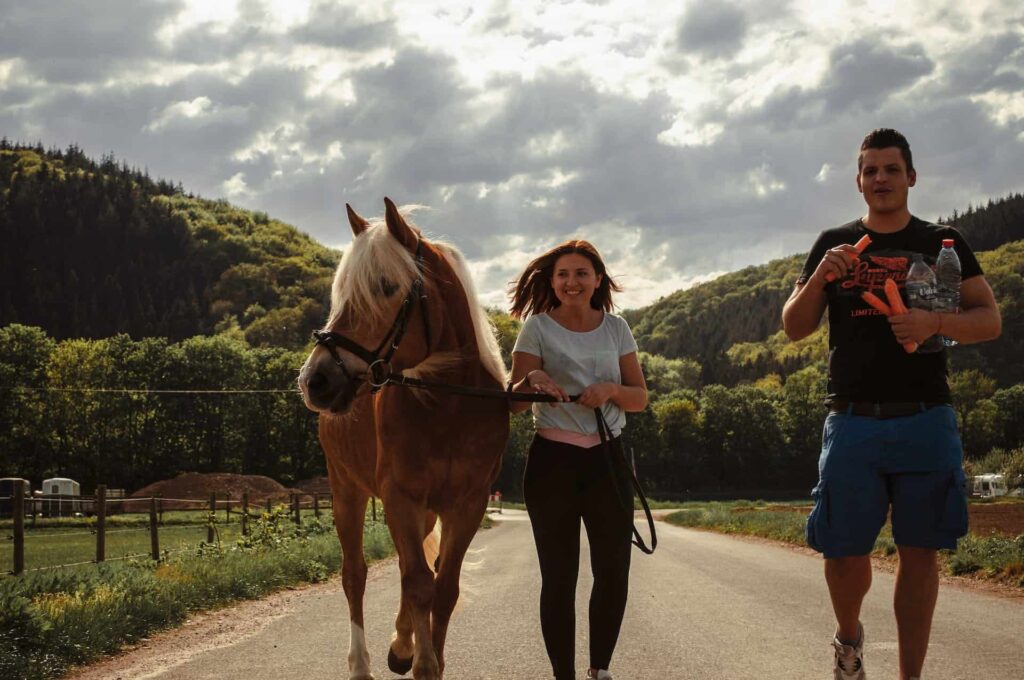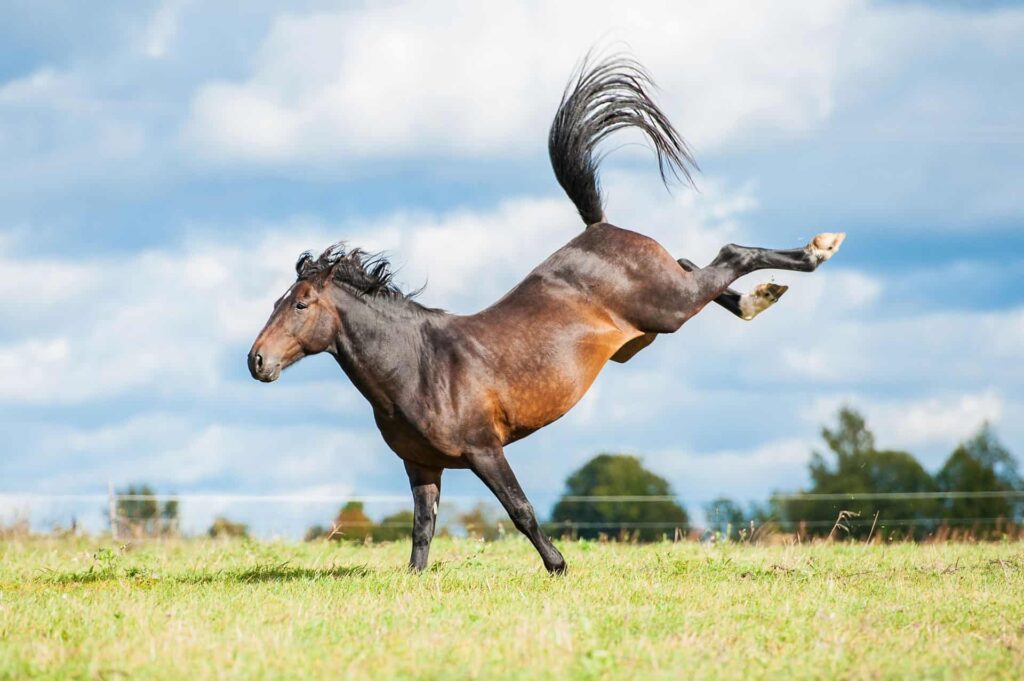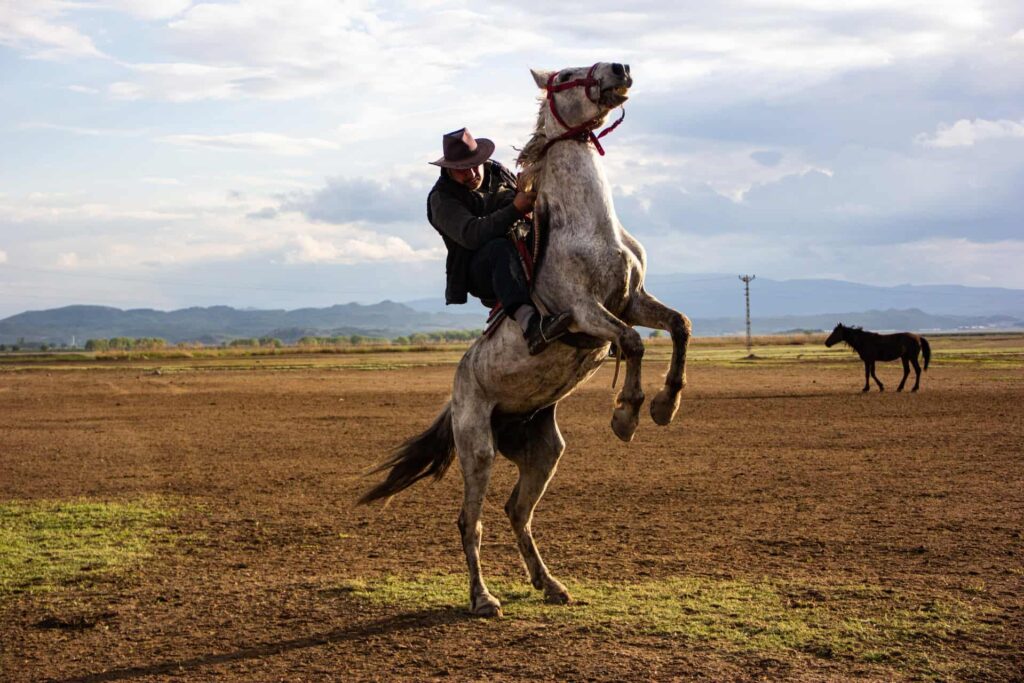Building a strong and meaningful relationship with a new horse is often a top priority for horse owners and equestrians alike. Fortunately, there are numerous approaches one can employ to foster a deep bond with their new equine companion. Learning the secrets of horse bonding and the do’s and don’ts is the first step in the process.
Through patience, understanding, and consistency, a harmonious connection can be established and nurtured between human and horse. Creating a successful foundation for this relationship contributes significantly to the enjoyment and success of both the owner and the horse.
Key Takeaways
- Establishing a bond with a new horse requires patience and understanding.
- Consistency in interactions is crucial for building a strong relationship.
- A successful human-horse bond enhances the overall experience of both the owner and the horse.
Ways to Bond with a Horse
Bonding with a horse is necessary for establishing a trusting and well-rounded relationship. To achieve this, various activities can be conducted together, not limited to riding sessions. Horses, like humans, benefit from positive connections and familiarity with their surroundings. It is crucial for riders to allocate time to be with their horses, engaging in play and friendly interaction.
Quality time can be spent by taking your horse for walks, grooming them, or simply being present in their stall or paddock. Such moments of connection strengthen the horse-rider bond and enhance horsemanship skills.
How to Bond with Your Horse
To create a strong bond between you and your horse, certain behaviors must be demonstrated and maintained. Start by establishing consistency and fairness in your relationship. Be a dependable leader, responding to your horse in the same manner every time and correcting undesirable behaviors. Ensure you are not asking your horse to perform tasks beyond their training or physical abilities and use familiar aids and cues.
Devote time to building a connection with your horse outside of riding sessions. Spending quality time with them allows you to develop a deeper understanding of their personality and creates a stronger bond.
Gain a thorough knowledge of your horse’s body language to understand their likes and dislikes. Observe signals such as ears moving back or kicking out, which indicate discomfort or disapproval. Pay attention to positive reactions, like pricked ears or focused attention.
Keep your emotional state in check when around your horse, as they are sensitive to the feelings and energy of their surroundings. Be aware of your own mood since horses often mirror the emotions of those nearby.
Foster positive associations by spending time with your horse in environments they enjoy. If your horse is happiest in the field, engage with them there to create a positive connection between your presence and their preferred setting. This practice strengthens trust, respect, mutual understanding, and ultimately, the bond between you and your horse.

Ways to Bond with a Horse
Forming a strong connection with your horse can be achieved through various activities, even outside of riding. These interactions facilitate the development of trust and familiarity between you and your horse.
- Take a walk together: A simple and effective method for bonding with your horse is to walk with them while they graze. Being present and attentive during these times helps set the foundation for a stronger relationship.
- Groundwork exercises: Establishing clear communication and mutual respect is crucial for building a bond, and groundwork exercises provide an opportunity to do so. Teach your horse basic commands on foot and ensure they respect your personal space.
- Groom your horse: Regular grooming puts you in close contact with your horse and allows you to gauge their comfort with being touched. As their comfort level increases, so does the bond between you.
- Communicate verbally: By talking to your horse, they will begin to recognize your voice and its varying tones. This recognition enables your voice to become a tool for calming your horse and fostering familiarity.
- Engage in play: Horses are naturally playful creatures, and joining them in their playful activities can enhance your connection. Spend time in the field, copying their actions in a pressure-free environment to encourage playful interaction and bonding.
- Social grooming: Also known as allogrooming, this involves physically grooming each other, which is a common behavior among horses to establish social bonds.
- Teach tricks and exercises: Introducing your horse to new exercises and tricks can help improve communication and trust. Clicker training is one positive reinforcement technique that can be used to teach new behaviors while strengthening your bond.
By incorporating these activities into your routine, you can create a strong and lasting bond with your horse. Remember that patience, consistency, and mutual understanding are key in forming a sincere connection.
Horse Bonding Do’s and Don’ts
When bonding with your horse, follow specific guidelines to ensure you establish a strong connection based on trust and genuine interactions. Here are some do’s and don’ts to consider when bonding with your equine friend.
Do:
- Begin and end each interaction with your horse on a positive note.
- Utilize your hands for scratching itchy spots or massaging tight muscles after riding to create a physical connection.
- Reinforce good behavior with treats when appropriate.
- Be attentive to your horse’s feedback and understand the messages their reactions convey.
- Allow your horse to bond at their own pace by taking it slow.
- Spend time with your horse in various environments, such as fields, stables, and riding rings.
- Introduce your horse to new or potentially intimidating situations and use these opportunities to comfort and reassure them.
- Practice patience while understanding that horses, like humans, require time to build and maintain strong bonds.
Don’t:
- Project a negative mood from your day onto your interactions with your horse.
- Force your horse to bond at a pace faster than they’re comfortable with.
- Hastily begin riding sessions; take time to ease into them for both you and your horse’s mental preparation.
- Overreact if your horse doesn’t respond as expected.
- Pressure your horse to perform tasks beyond their physical capabilities, as this can deteriorate trust and confidence.
- Be inconsistent; maintain a steady demeanor around your horse to build trust.
- Limit interactions with your horse solely to riding and strenuous activities; allocate time for play and quality bonding moments.
Remember, establishing a strong bond with your horse is crucial for a healthy and trusting relationship. By following these do’s and don’ts, you can develop a deeper connection that benefits both you and your equine companion.

How Long Does It Take to Bond with a Horse
The duration required to establish a robust connection with a horse mainly depends on the amount of time spent together each week. If a horse frequently interacts with the same person, it will trust them more quickly and enjoy their companionship.
Mutual respect is critical for a successful bond with a horse. Engaging in regular, productive groundwork sessions as the rider and leader will enhance the relationship. Consistency in these sessions is crucial for optimal results.
A horse’s personality and history can also affect the time it takes to trust and form a relationship with a person. Horses that have been mistreated may take longer to relax and be comfortable, whereas those with a stubborn nature or aversion to human contact may also take more time to bond.
However, significant progress can be made in even a single session. A few hours of assertive, kind, and calm interactions can positively impact a horse’s feelings toward a person and their willingness to be around them. Encourage the horse by focusing on relaxation and mentally supportive exercises that contribute to emotional state, energy, and performance by utilizing horsemanship skills and horseback riding.
Bonding With a New Horse
Acquiring a new horse is an exciting experience for any rider. During this time, it is vital to build a strong bond with the horse. The following are suggested steps to achieve a successful connection:
- Provide Reassurance: If the horse is in a new environment or has changed stables, they need time to adjust. Be present as often as possible to interact with them and offer reassurance during this period.
- Go Slow: Allow your horse to take their time to get to know you and feel comfortable. Regularly walking your horse on foot helps connect with them without adding any pressure.
- Spend Time in the Stable: Sharing time in your horse’s barn gives both of you a chance to become familiar with one another’s boundaries in a confined space.
- Engage in Footwork: Building trust with your horse means making them comfortable with having their feet lifted and cleaned. Regularly working on this task helps them become more at ease with your touch.
- Desensitize Your Horse: Bring various objects that might seem scary to your horse, such as plastic bags and brooms. Slowly introduce these items until they no longer appear foreign. This exercise helps establish trust and confidence.
- Do Halter Work: Interacting with your horse while they wear a halter on foot is valuable. Simple commands like ‘walk on’ or ‘halt’ can be taught during this time, and rewarding them when they respond appropriately reinforces the bond.
- Lunge Your Horse: Spend time in a ring while your horse responds to your signals on foot. Reinforce good behavior with praise, as this teamwork strengthens the bond between you both.
- Trail Ride Together: Taking relaxed strolls around their environment helps familiarize them with the area while providing an opportunity to share the experience together. Offer them assurance when they encounter uncertain situations and communicate with them throughout the ride.
Remember to take your time and pay attention to your horse’s reactions as you introduce new activities. Allow the bond to develop gradually and don’t be discouraged if it takes longer than expected. Horses, like people, require time to build trusting relationships. By investing in this process, you are laying the groundwork for a lasting partnership.
Related: Horse Training
Horse Bonding Frequently Asked Questions
Groundwork Exercises for Building Horse-Human Connection
- Round Pen Work: This exercise allows the horse to move freely in a round pen while you establish communication through body language and voice commands.
- Lunging: Lunging involves the horse moving in a circle around you in a long line, helping to establish a connection through consistent cues and responses.
- Leading: Practice leading your horse from different positions, reinforcing respectful and attentive behavior.
Interpreting Horse Body Language for Bonding
- Ears: Forward ears indicate curiosity or interest, while pinned-back ears can signify discomfort or aggression.
- Tail: A swishing tail can signal stress or irritation, while a relaxed tail usually means the horse is content.
- Head: A lowered head can indicate relaxation and submission, while a raised head may represent alertness or anxiety.
Trust-Building Activities with Horses
- Grooming: Regularly grooming your horse not only maintains their health but also allows you to bond through physical touch and care.
- Hand Grazing: Spending time with your horse, while they graze, can create a relaxed and enjoyable atmosphere, strengthening your relationship.
- Desensitization: Exposing your horse to new experiences or objects in a controlled setting can help them learn to trust your guidance and protection.
Gaining a Horse’s Trust
- Consistency: Be clear, consistent, and patient with your requests and cues, allowing the horse to understand your expectations.
- Positive Reinforcement: Reward and praise your horse for positive behavior, which encourages trust and strengthens your bond.
- Respect: Treat your horse with respect and kindness, recognizing their boundaries and limitations, and giving them the time and space needed to feel comfortable with you.
Time Required to Build a Strong Horse-Human Bond
The time it takes to establish a strong bond with a horse can vary greatly depending on factors like the individual horse’s temperament, your own experience, and the consistency of your interactions. It could take several weeks to months, with continued effort needed to maintain and deepen the bond.
Fostering Mutual Trust with Your First Horse
- Take Your Time: Allow both you and your horse to adjust and learn from each other at a comfortable pace.
- Learn from Experienced Horsemen: Gain knowledge and tips from experienced horse owners, trainers, or instructors to build a strong foundation for your relationship with your horse.
- Observe Cues: Pay close attention to your horse’s body language and cues to better understand their needs and emotions.
- Be a Confident Leader: Horses look for guidance and leadership; cultivating your own confidence will help to establish trust and respect between you and your horse.
Last Updated on November 27, 2023 by Nate Dewsbury



